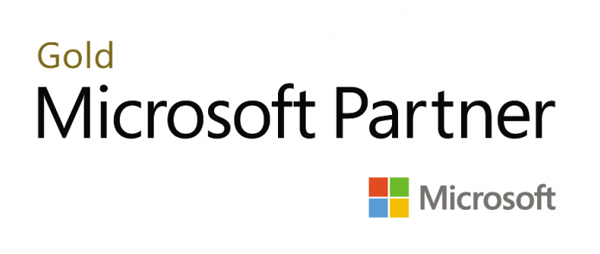Core Solutions of Microsoft SharePoint Server 2013, On Demand 20331
- Seminar
- E-Learning
- Zurzeit keine Termine
- 40 Unterrichtseinheiten
- Teilnahmebescheinigung
Seminarnummer: 29409
This MOC on Demand course will provide you with the knowledge and skills to configure and manage a Microsoft® SharePoint Server 2013 environment. This course will teach you how to configure SharePoint Server 2013, as well as best practices, and considerations that will help you optimize your deployment.
Details zu MOC On Demand Trainings finden Sie unter den Hinweisen weiter unten.
Details zu MOC On Demand Trainings finden Sie unter den Hinweisen weiter unten.
Nutzen
In dieser MOC on Demand Version ist eine original MOC Unterlage in digitaler Form enthalten.
After completing this course, students will be able to:
After completing this course, students will be able to:
- Describe the key features of SharePoint 2013
- Design an information architecture
- Design logical and physical architectures
- Install and configure SharePoint Server 2013
- Create web applications and site collections
- Plan and configure service applications
- Manage users and permissions
- Configure authentication for SharePoint 2013
- Secure a SharePoint 2013 deployment
- Manage taxonomy
- Configure user profiles
- Configure enterprise search
- Monitor and maintain a SharePoint 2013 environment
Zielgruppe
The course is targeted at experienced IT Professionals interested in learning how to install, configure, deploy and manage SharePoint Server 2013 installations in either the data center or the cloud.
The minimally qualified candidate typically:
Is an IT professional who plans, implements, and maintains a multi-server deployment of SharePoint Server 2013. Has a working knowledge of, and preferably hands-on experience, with SharePoint Online. Has broad familiarity with SharePoint workloads. Have experience with business continuity management, including data backup, restoration, and high availability. Has experience with authentication and security technologies Has experience with Windows PowerShell.
Anforderungen
An ideal candidate will have at least one year of experience with deploying and administering multiple SharePoint 2010 farms across a large enterprise. Because many customers skipped upgrading from SharePoint 2007, a candidate can also have at least 2 years of experience with SharePoint 2007 and knowledge of the differences between 2007 and 2010, particularly the Service Application model. A candidate can demonstrate the following skills:
- Software management in a Windows 2008 R2 enterprise server or Windows Server 2012 environment.
- Deploying and managing applications natively, virtually and in the cloud.
- Administering Internet Information Services (IIS).
- Configuring Active Directory for use in authentication, authorization and as a user store.
- Managing an application remotely using Windows PowerShell 2.0.
- Connecting applications to Microsoft SQL Server.
- Implementing Claims-based Security.
Inhalte
Module 1: Introducing SharePoint Server 2013
Microsoft SharePoint Server 2013 is a document storage and collaboration platform that offers many benefits to organizations. SharePoint deployments may take many different forms in scope, where a deployment may be focused on only delivering one feature, such as enterprise search, or many features, such as document management, business intelligence, web content management, and workflows. Lessons
Module 2: Designing an Information Architecture
Information architecture (IA) defines the structures by which an organization catalogs information. Designing an IA requires a detailed understanding of the information held in an organization and its usage, context, volatility, and governance. A good IA rationalizes the creation and storage of content and streamlines its surfacing and use. Lessons
Module 3: Designing a Logical Architecture
This module reviews the logical constructs of Microsoft SharePoint Server 2013 and SharePoint Online. It discusses the importance of creating a logical architecture design based on business requirements before you implement a solution. The module covers conceptual content, defining a logical architecture, and the components of Microsoft SharePoint Server 2013 that you must map to business specifications.
Lessons
Module 4: Designing a Physical Architecture
This module describes the factors that you should consider when you design the physical architecture of a SharePoint 2013 deployment. The physical architecture refers to the server design, farm topology, and supporting elements—such as network infrastructure—for your deployment. This physical architecture underpins the operations of your SharePoint 2013 environment, so it is essential that your physical design fully meets the operational requirements.
Lessons
Module 5: Installing and Configuring SharePoint Server 2013
After you design and plan your logical and physical architectures for a Microsoft SharePoint Server 2013 deployment, the next installation steps are to implement the deployment design and specify configuration settings for the deployment. In this module, you will learn about installing SharePoint 2013 in various topologies. You will learn how to configure farm settings, and how to script the installation and configuration of SharePoint 2013.
Lessons
Microsoft SharePoint Server 2013 is a document storage and collaboration platform that offers many benefits to organizations. SharePoint deployments may take many different forms in scope, where a deployment may be focused on only delivering one feature, such as enterprise search, or many features, such as document management, business intelligence, web content management, and workflows. Lessons
- Key Components of a SharePoint Deployment
- New Features in SharePoint 2013
- SharePoint 2013 Deployment Options
Module 2: Designing an Information Architecture
Information architecture (IA) defines the structures by which an organization catalogs information. Designing an IA requires a detailed understanding of the information held in an organization and its usage, context, volatility, and governance. A good IA rationalizes the creation and storage of content and streamlines its surfacing and use. Lessons
- Identifying Business Requirements
- Understanding Business Requirements
- Organizing Information in SharePoint 2013
- Planning for Discoverability
- Identifying Site Columns and Content Types
- Designing a Business Taxonomy
- Identifying Site Columns and Content Types
- Designing a Business Taxonomy
Module 3: Designing a Logical Architecture
This module reviews the logical constructs of Microsoft SharePoint Server 2013 and SharePoint Online. It discusses the importance of creating a logical architecture design based on business requirements before you implement a solution. The module covers conceptual content, defining a logical architecture, and the components of Microsoft SharePoint Server 2013 that you must map to business specifications.
Lessons
- Overview of SharePoint 2013 Logical Architecture
- Documenting Your Logical Architecture
- Plan a Logical Architecture
- Produce a Logical Architecture Diagram
Module 4: Designing a Physical Architecture
This module describes the factors that you should consider when you design the physical architecture of a SharePoint 2013 deployment. The physical architecture refers to the server design, farm topology, and supporting elements—such as network infrastructure—for your deployment. This physical architecture underpins the operations of your SharePoint 2013 environment, so it is essential that your physical design fully meets the operational requirements.
Lessons
- Designing Physical Components for SharePoint Deployments
- Designing Supporting Components for SharePoint Deployments
- SharePoint Farm Topologies
- Mapping a Logical Architecture Design to a Physical Architecture Design
- Designing a Physical Architecture
- Develop a Physical Architecture Design Diagram
Module 5: Installing and Configuring SharePoint Server 2013
After you design and plan your logical and physical architectures for a Microsoft SharePoint Server 2013 deployment, the next installation steps are to implement the deployment design and specify configuration settings for the deployment. In this module, you will learn about installing SharePoint 2013 in various topologies. You will learn how to configure farm settings, and how to script the installation and configuration of SharePoint 2013.
Lessons
- Installing SharePoint Server 2013
- Scripting Installation and Configuration
- Configuring SharePoint Server 2013 Farm Settings
Hinweise
MOC On Demand Trainings sind original Microsoft Trainings, in denen Sie zeit- und ortsungebunden lernen können.
Diese Trainings enthalten:
- Zugang zum offiziellen Microsoft Video on Demand Kurs für 90 Tage ab dem ersten Zugriff.
- Einen Lab-Online-Zugang für praktische Übungen, der ab Kauf 6 Monate gültig ist.
- Eine originale MOC Schulungsunterlage in digitaler Form, wie sie auch in den Live-Trainings eingesetzt wird.


